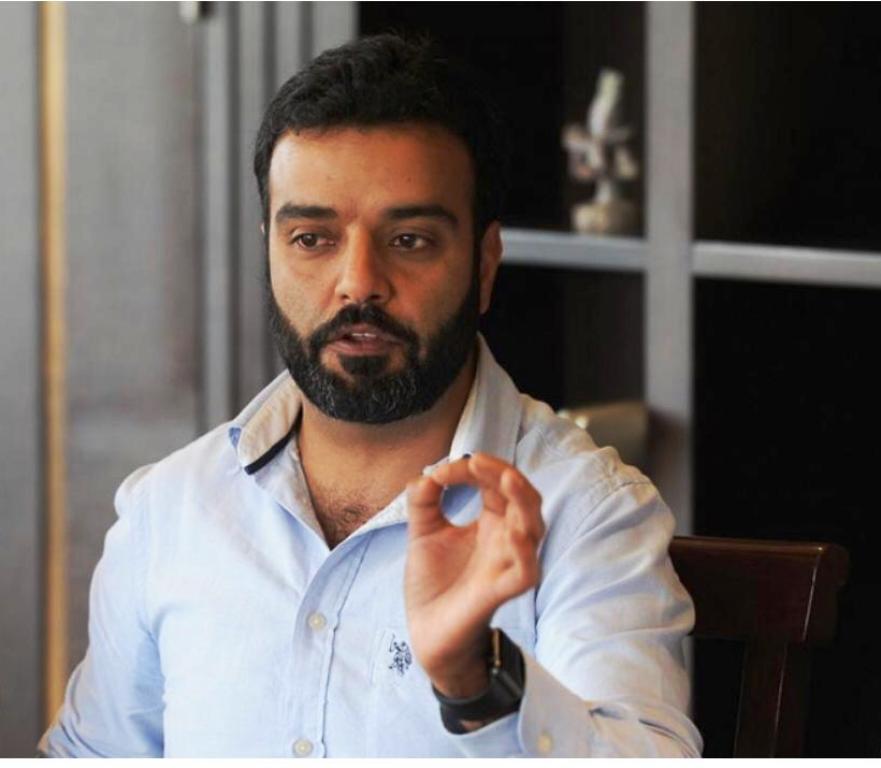Srinagar
In major breakthrough scientists from All India Institute of Medical Sciences, New Delhi, and National Brain Research Institute, Manesar have described a new concept in the field of virology called “Genome Resurrection”.
The spokesman said scientists have explained how positive-strand RNA viruses (one of the most deadly class of viruses) enter our genomes and stay there in a quiescent state or activate disease processes.The lead scientist in the description of this concept is the eminent Kashmiri Dr Muneeb A Faiq.
These scientists have described this groundbreaking concept by taking Zika viruses as a model and the pioneering research has appeared in the widely reputed journal “Frontiers in Microbiology-Virology”.
 Dr Muneeb Faiq indicated that their research has widespread implications not merely limited to Zika virus mediated brain defects. He said that the mechanism described by their research team has imperative implications for many other diseases.
Dr Muneeb Faiq indicated that their research has widespread implications not merely limited to Zika virus mediated brain defects. He said that the mechanism described by their research team has imperative implications for many other diseases.
Dr Faiq said that one of the interesting points in their research is the indication of “Endogenous Retrovirus Resurrection Elements” in viral genomes which activate the silently archived gene elements in our genomes and employ them to integrate with the host genome.
Though these elements have not been detected yet there is a high probability of their existence. If these elements are identified in near future, they are going to open new doors in the fundamentals of virology. The basis of their present radical idea is the mechanism they proposed for how Zika virus causes developmental brain defects.

In that proposition, these scientists had proposed that Zika virus enters the host genome and interferes with the retinoic acid signalling mechanism in the brain of the developing fetus. It is important to point out that several other scientists from many countries have confirmed the veracity of their theory.
Faiq and his associates have described a novel mechanism which establishes a definite possibility of the integration of positive-strand RNA viruses into the host genome. This insight is a pioneering breakthrough and may lead to radical changes in fundamentals of modern virology and may pave the way to important understandings of virus-based pathogenesis which will ultimately lead to better treatment and management of diseases like Brain embryopathy etc. In a speculative context, this hypothesis may also be helpful in understanding AIDS better (though AIDS virus does not belong to this category of viruses).
Integration of positive-strand RNA viruses is, as of now, not considered a possibility because these viruses do not have integrase and reverse transcriptase which are indispensable elements that a virus needs to enter the human genes. Also, positive-strand RNA viruses do not need to synthesize DNA to complete their life cycle neither do they have any reverse transcriptase to generate a complimentary copy DNA. Since there seems to be no chance of DNA stage in their life cycle, it becomes easy to infer that a DNA stage does not exist and is not functionally important. Faiq group has suggested the presence of such a possibility despite the absence of the above mentioned essential elements. In order to give a scientific basis to this apparently radical proposition, they have provided a strong justification of a positive-strand RNA viral genome (devoid of reverse transcriptase and integrase) integration into the host genome and have also speculated a set of possible functions such an integration may serve the virus.
The work is important in the sense that recurrence of viral diseases and other ambiguous questions can be targeted using this approach in future.















